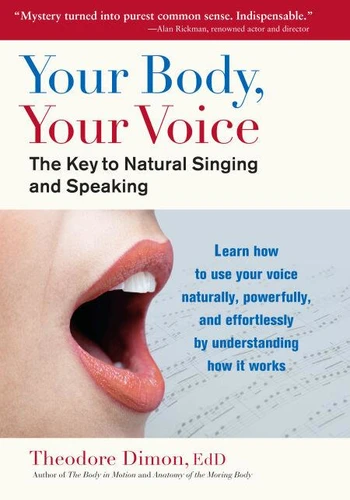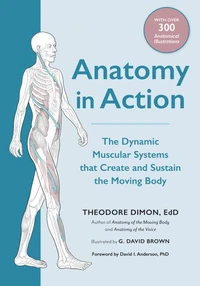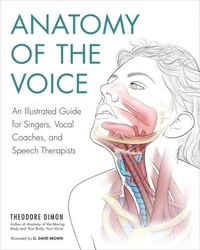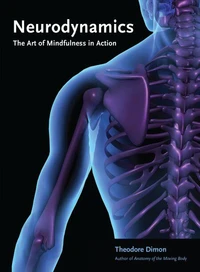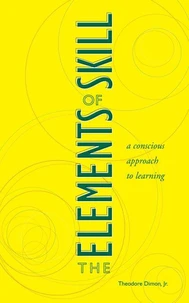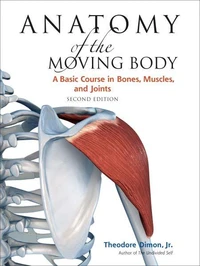Your Body, Your Voice. The Key to Natural Singing and Speaking
Par : ,Formats :
Disponible dans votre compte client Decitre ou Furet du Nord dès validation de votre commande. Le format ePub protégé est :
- Compatible avec une lecture sur My Vivlio (smartphone, tablette, ordinateur)
- Compatible avec une lecture sur liseuses Vivlio
- Pour les liseuses autres que Vivlio, vous devez utiliser le logiciel Adobe Digital Edition. Non compatible avec la lecture sur les liseuses Kindle, Remarkable et Sony
- Non compatible avec un achat hors France métropolitaine
 , qui est-ce ?
, qui est-ce ?Notre partenaire de plateforme de lecture numérique où vous retrouverez l'ensemble de vos ebooks gratuitement
Pour en savoir plus sur nos ebooks, consultez notre aide en ligne ici
- Nombre de pages184
- FormatePub
- ISBN978-1-62317-789-8
- EAN9781623177898
- Date de parution24/05/2022
- Protection num.Adobe DRM
- Taille3 Mo
- Infos supplémentairesepub
- ÉditeurNorth Atlantic Books
Résumé
Develop your vocal skills-whether for singing or speaking-in this comprehensive guide with over 50 illustrations and holistic techniques for vocal training and healing. Understanding the voice as part of a larger system: What interferes with it? And how can we restore it to its fullest potential? In this innovative book, Theodore Dimon, EdD, shows how each part of the vocal organ (breathing, larynx, throat, and so on) works as part of a larger musculoskeletal system that is often interfered with.
Identifying this larger system-and understanding how it works-allows a person to train and improve their voice, whether for speaking or singing. Traditional vocal training methods, says Dimon, cannot be effective without restoring the functioning of the musculature that supports the voice. Enhanced with over 50 detailed full-color illustrations, the book discusses the fallacy of traditional breathing exercises and explains the key to efficient breathing lies in the expansive support of the trunk and rib cage.
Investigating the elements needed to produce a strong supported tone, Dimon describes the importance of voice "placement, " or directing the sound to a part of the body to produce a fully rounded, resonant tone. He identifies harmful patterns of speech and singing, and offers helpful methods for reestablishing the natural function of the vocal mechanism. Individual chapters cover elements of the whispered "ah, " producing a pure sung tone, vocal registers, the suspensory muscles of the larynx, and more."Mystery turned into purest common sense.
Indispensable."-Alan Rickman, actor
Identifying this larger system-and understanding how it works-allows a person to train and improve their voice, whether for speaking or singing. Traditional vocal training methods, says Dimon, cannot be effective without restoring the functioning of the musculature that supports the voice. Enhanced with over 50 detailed full-color illustrations, the book discusses the fallacy of traditional breathing exercises and explains the key to efficient breathing lies in the expansive support of the trunk and rib cage.
Investigating the elements needed to produce a strong supported tone, Dimon describes the importance of voice "placement, " or directing the sound to a part of the body to produce a fully rounded, resonant tone. He identifies harmful patterns of speech and singing, and offers helpful methods for reestablishing the natural function of the vocal mechanism. Individual chapters cover elements of the whispered "ah, " producing a pure sung tone, vocal registers, the suspensory muscles of the larynx, and more."Mystery turned into purest common sense.
Indispensable."-Alan Rickman, actor
Develop your vocal skills-whether for singing or speaking-in this comprehensive guide with over 50 illustrations and holistic techniques for vocal training and healing. Understanding the voice as part of a larger system: What interferes with it? And how can we restore it to its fullest potential? In this innovative book, Theodore Dimon, EdD, shows how each part of the vocal organ (breathing, larynx, throat, and so on) works as part of a larger musculoskeletal system that is often interfered with.
Identifying this larger system-and understanding how it works-allows a person to train and improve their voice, whether for speaking or singing. Traditional vocal training methods, says Dimon, cannot be effective without restoring the functioning of the musculature that supports the voice. Enhanced with over 50 detailed full-color illustrations, the book discusses the fallacy of traditional breathing exercises and explains the key to efficient breathing lies in the expansive support of the trunk and rib cage.
Investigating the elements needed to produce a strong supported tone, Dimon describes the importance of voice "placement, " or directing the sound to a part of the body to produce a fully rounded, resonant tone. He identifies harmful patterns of speech and singing, and offers helpful methods for reestablishing the natural function of the vocal mechanism. Individual chapters cover elements of the whispered "ah, " producing a pure sung tone, vocal registers, the suspensory muscles of the larynx, and more."Mystery turned into purest common sense.
Indispensable."-Alan Rickman, actor
Identifying this larger system-and understanding how it works-allows a person to train and improve their voice, whether for speaking or singing. Traditional vocal training methods, says Dimon, cannot be effective without restoring the functioning of the musculature that supports the voice. Enhanced with over 50 detailed full-color illustrations, the book discusses the fallacy of traditional breathing exercises and explains the key to efficient breathing lies in the expansive support of the trunk and rib cage.
Investigating the elements needed to produce a strong supported tone, Dimon describes the importance of voice "placement, " or directing the sound to a part of the body to produce a fully rounded, resonant tone. He identifies harmful patterns of speech and singing, and offers helpful methods for reestablishing the natural function of the vocal mechanism. Individual chapters cover elements of the whispered "ah, " producing a pure sung tone, vocal registers, the suspensory muscles of the larynx, and more."Mystery turned into purest common sense.
Indispensable."-Alan Rickman, actor

